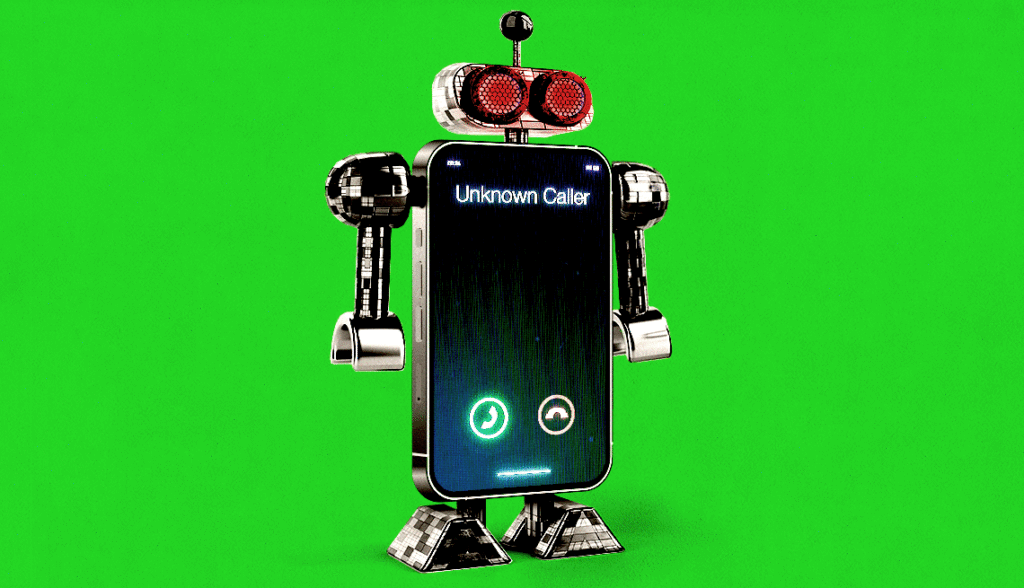How You Can Stop Illegal Robocalls

Whether we’re sitting down to dinner or running an errand, our phones are with us — often bearing calls from criminals. Those crooks are behind an endless stream of illegal robocalls dangling goodies such as free cruises or lottery jackpots, demanding payment for nonexistent debts or perpetrating some other scam to steal your money or get your sensitive personal data.
In 2023, more than 55 billion robocalls were made to U.S. consumers, up 9 percent over the volume in 2022, according to YouMail, which provides call blocking and management services. Within that data, there are some positive trends, according to the company: Scam calls have dropped by 38 percent, with 8.1 billion recorded in 2023.
“Enforcement took out some of the big volume callers,” says Alex Quilici, CEO of YouMail. “Some of it is due to scammers getting highly targeted.” Even so, he adds, over the past 10 years, “we’ve gone from somewhere where you could trust the caller ID and trust the caller to you can’t trust anything.”
What are robocalls?
Generally, robocalls are prerecorded voices, and they may be made through automatic dialing technology. They tend to use VoIP (Voice Over Internet Protocol), which helped them become so pervasive. “Internet-based calling is fantastic in some ways; it’s enabled us to call our friends and family internationally for cheap and easy. But it’s also made it cheap and easy for the bad guys to call us,” says Josh Bercu, executive director of USTelecom’s Industry Traceback Group, which works with providers to combat spam calls.
Not all robocalls are scams. Your doctor may use robocalling to remind you of an appointment, or an airline may share news about a flight change. The Federal Communications Commission (FCC) allows such robocalls, as long as they’re for informational or noncommercial purposes. Pollsters, political campaigns and nonprofit groups (including AARP) can also call you.
If you gave permission for a company to contact you, it can legally make a robocall. (You may not even realize you granted permission because the agreement was buried in fine print.)
Scammers can use caller ID spoofing to make it appear that they’re calling from a legitimate or local number. Although they used to take a scattershot approach to robocalls, criminals shifted to more targeted attacks on victims, using information from data breaches and other sources.
“Unfortunately, all this stuff is on data broker websites now, and it’s not hard to pull it,” Bercu says.
To find out how you can stop illegal robocalls, from AARP, CLICK HERE.
……………………………..
4.
Stroke: Signs, Causes and Treatment
Having a stroke is just as serious as having a heart attack. So, it’s important to know the signs of stroke and act quickly if you suspect you or someone you know is having one. Stroke is the fifth leading cause of death in the United States and is the number one cause of serious adult disability. Stroke risk increases with age, but strokes can — and do — occur at any age. The good news is that most strokes can be prevented, and there are steps you can take that may lower your chance of having a stroke.
Know the signs of stroke
Knowing the symptoms of a stroke and acting quickly could mean the difference between life and disability or death. If you delay getting help, the risk of permanent damage or death increases greatly.
Even if the symptoms don’t last long, they may still be a sign of stroke. Call 911 right away if you or someone you know has any of these symptoms:
• Sudden numbness or weakness in the face, arm, or leg — especially on one side of the body
• Sudden confusion, trouble speaking, or understanding speech
• Sudden problems seeing in one eye or both eyes
• Sudden dizziness, loss of balance or coordination, or trouble walking
• Sudden severe headache with no known cause
Other danger signs that may occur include double vision, drowsiness, and nausea or vomiting. Stroke strikes fast. Responding quickly when you notice any of these symptoms is key.
Do not drive yourself to the hospital and don’t ask someone else to drive you. Call 911 for an ambulance so that medical personnel can begin lifesaving treatment on the way to the emergency room.
What is a stroke?
A stroke happens when there’s a change in how blood flows through the brain. Blood brings oxygen and nutrients to brain cells. If blood can’t flow to a part of the brain, cells that do not receive enough oxygen suffer and eventually die. If brain cells are without oxygen for only a short time, they can sometimes repair themselves. However, once brain cells die, they can’t be repaired. While there is growing evidence that, in some cases, new brain cells help to replace those lost, this takes time and occurs much more slowly in older adults. As a result, someone who has had a stroke may have trouble speaking, thinking, or walking.
To learn about the types of stroke, how to diagnose and treat a stroke, and ways to lower your risk, from the National Institute on Aging, CLICK HERE.
